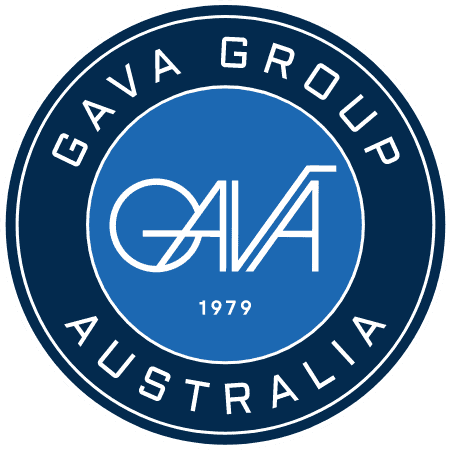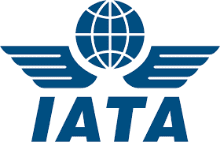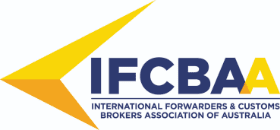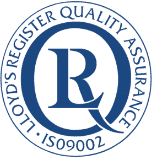FAQ's
Your Shipping – Our Passion
Have a question? Take a look through our frequently asked questions to see if any of them might be able to assist you. If you still have a question, please feel free to contact us. Our team would be more than happy to help.
Gava Australia can provide rates for shipments across the globe.
You can click request a quote form or contact Gava Sydney (head office) +61 2 9310 4688 or Gava Melbourne +61 3 9330 2399.
Gava handles commercial shipping only unless your cargo is business to business (on-going).
Yes, we have freight consultants in Sydney and Melbourne that can meet with you to discuss your business requirements.
Ring the Gava Sydney (+61 2 9310 4688) or Melbourne (+61 3 9330 2399) office and we will arrange a meeting with you at your convenience.
FCL
- Full Container Load (FCL) means your cargo will be shipped in a full container. You can nominate the size of your container based on the weights and dimensions of the cargo you are shipping.
- The most common FCL types are 20” General Purpose Container (20GP) and 40” General Purpose Container (40GP).
- We have provided a downloadable container guide on our website, which you can use to understand the full specifications of container types for FCL shipping.
LCL:
- Less than a Container Load (LCL) means your cargo will be consolidated with other shipper’s cargo in a container that you will share. So if you have small amount of cargo (one or two pallets) you do not need all the space of one container.
- It’s a cheaper alternative to airfreight for small consignments.
A customs broker is fully licensed by the Australian Border Force to customs clear cargo arriving in Australia. It is recommended to engage a customs broker to clear cargo on your behalf.
Our in-house customs brokers will work with you to review your documentation and ensure you are paying the correct duties and taxes for your cargo.
Contact our Gava Australia team to find out about the range of services our brokerage team offer, including consultancy and tariff reviews. Ring the Gava Sydney (+61 2 9310 4688) or Melbourne (+61 3 9330 2399).
For Sea freight imports into Australia, containers need to be offloaded from the vessel and unpacked in the case of LCL shipping. Therefore, the goods are not immediately available for collection on the same day the cargo vessel lands at port.
You should allow 2 days from business arrival date for your FCL container to become available.
LCL cargo should allow 4 – 6 business days from date of arrival before being able to collect the cargo. This extended timeframe is due to the requirement to unpack the cargo from the bonded warehouse under Customs prior to collection.
The main documents required for importing into Australia include:
- Commercial Invoice
- Packing List
- Packing Declaration
Depending on the country of origin and the products you are importing, you may also require:
- Import Permit
- Fumigation Certificate
- Manufacturers Declaration
Read our importing checklist or speak to our consultants for a breakdown of what you will need for your consignment. Ring the Gava Sydney (+61 2 9310 4688) or Melbourne (+61 3 9330 2399) office.
Import duty is calculated according to the Free on Board (FOB) value of your cargo in Australian Dollars. Import duty is calculated as a % of this value, based on the Australian Customs Tariff classification under the Customs Tariff Act 1995. Free trade agreements, tariff concessions or dumping duty can affect this price. GST is calculated on the value of your cargo plus import duty, plus insurance, plus freight.
Once you have this value, the standard percentage GST rate in Australia is 10% of this total cost.
Our customs consultants can provide an anticipated cost for duties and GST if you provide a commercial invoice for your shipment.
Call Gava Sydney (+61 2 9310 4688) or Gava Melbourne (+61 3 9330 2399) or fill in our request a call back form.
These are the details you will need to have prepared:
Collection Details
- Supplier’s name
- Supplier’s office address
- Supplier’s warehouse address
- Contact person
- Phone numbers
- Email address
Consignment Details
- Preferred method of shipping
- Commodity
- Size of shipment
- Commercial Value
- PO Order Number / Ref
Delivery Details
- Buyer’s name
- Buyer’s office address
- Buyer’s warehouse address
- ABN
- Contact person
- Phone numbers
- Email address
Shipping sea freight from Australia to New Zealand is a relatively fast process, due to the minimal geographical distance between AU and NZ for the sea freight to cover. However, the timing will depend on your requirements, and the size of the freight you would like shipped.
At Gava Australia, we offer Full Container Load (FCL) and Less-than-Container Load (LCL) sea freight forwarding from Australia to New Zealand (among other routes). We have a high capacity, and ship vast quantities of large items by sea freight from Australia to New Zealand, with minimal constraints on shipment sizes. This all means that when shipping your freight with Gava Australia, it arrives faster.
There are many types of shipping for cargo and freight, each with their own benefits. Transportation by land, sea or air are the main types of shipping for goods, freight or cargo. Within these main methods of shipping, there are several different sub-types of shipping; like Full Container Load (FCL) and Less than Container Load (LCL) for sea freight, Full Truckload Shipping (FTL) and Less Than Truckload (LTL) shipping for road cargo, and options for rail freight (by train), and Air Freight (by plane).
Which type of shipping is best depends on your requirements. Rail freight is cost-effective, environmentally friendly, high capacity, and reliable. Air freight has fast transit times and is reliable and secure. Truck freight offers flexible delivery options, is ideal for short to medium distances, and is suitable for various cargo sizes. Sea freight is cost-effective for large quantities of cargo, suitable for international shipping, and reliable.
If you’re wondering how to calculate air freight cost for your air cargo, you can do this manually, yourself, or via an air freight forwarder (like us here at Gava Australia). Our experts know how to calculate air freight costs effectively and efficiently, and can give you a quote quickly after you request it via our quick and easy freight quote form.
How to calculate air freight cost manually: determine the weight and volume of your cargo, and factor in the origin, destination, and additional services required. Air freight costs vary depending on the specifics, so it’s important to do your research and gather all necessary information.
At Gava Australia, we have the partnerships and the knowledge to get your air freight transported quickly, securely, reliably, and for a great price. Request a quote in minutes, and we’ll be in touch with a price for your air freight.
As freight forwarders, we often get asked; ‘what is freight forwarding?’ Technically speaking, freight forwarding is the process of arranging and coordinating the transportation of goods or cargo from one location to another, often involving multiple modes of transportation and various logistics services, such as customs clearance, documentation, and insurance. Our freight forwarding services include everything needed to get your goods, freight or cargo from point A to point B; organising all the communication, research, logistics and everything else required along the way while meeting your requirements.
When looking at how long customs clearance takes in Australia, there are several factors that need to be considered. For instance, the commodity of the cargo, mode of transportation, and current workload of customs officials come into play. Customs clearance for cargo in Australia can take anywhere from a few hours to several days, depending on these factors. Working with a good freight forwarder or customs broker can help fast-track the process. And that’s where we come in. At Gava Australia, we’re a freight forwarder with excellent turnaround times and a great track record of customer satisfaction. Get a quote to get started.
The difference between logistics and supply chain is that logistics refers to the management of the movement of goods or freight, and their storage, while supply chain encompasses the entire process of planning, sourcing, producing, and delivering products to customers. Logistics is a subset of supply chain management, which involves a broader perspective on the coordination of activities to maximise efficiency and customer value.
Supply chain attacks are a type of cyber threat that targets the software or systems of suppliers within the supply chain. As the supply chain is an important part of logistics and transportation, they are often the target of cyber-attacks and can be vulnerable due to their interconnected nature. What is a supply chain attack’s purpose? An attack can access the network and steal sensitive data or spread malware if successful. What’s important is ensuring that there are strong cybersecurity measures in place. As freight forwarders that can take care of the entire process, including the logistics and communication, if you’re concerned about supply chain attacks and their effects on your transport, just ask us for recommendations for options that have strong security measures in place.
We often get asked the question, ‘what does a supply chain manager do?’ And, the more important question of, ‘what can they do for me?’ A supply chain manager is responsible for overseeing and managing the entire supply chain of a company, which includes all the processes involved in getting products or services from suppliers to customers. A supply chain manager can help improve efficiency, optimise inventory, ensure timely delivery, manage risk, and build relationships for your business. They do this by streamlining your processes, reducing costs, and improving the efficiency of your supply chain. They can also help identify and mitigate risks in your supply chain, and ensure that those you work with are reliable and trustworthy.
Marine insurance is a type of insurance that provides coverage for goods, cargo, and vessels while they are being transported by sea or inland waterways. The answer to the question ‘what does marine insurance cover?’ is: loss or damage to the vessel itself (and any equipment or machinery onboard), loss or damage to the goods being transported (including damage caused by accidents, theft or natural disasters), and liability for damage to third-party property or injury to third parties (such as other ships, cargo and people).
A few of our clients have asked us why sea and air freight has increased. Costs are certainly rising, and one of the key reasons is the global shortage of shipping containers, as a result of the global pandemic. It has caused a backlog, and now, there’s been an increase in demand, leading to higher prices. Meanwhile, fuel prices have been increasing, too, and these sea vessels require a lot of fuel to transport these goods.
As well as that, the rising costs of labour and raw materials, along with the global supply chain industry’s many disruptions, have all led to this increased cost.
Supply chain management is the coordination of a supply chain, including all activities in the production and delivery of products from the supplier, to the end customer. It includes everything, from finding and sourcing raw materials to the manufacture, transport, and distribution of the product.
So, why is supply chain management important? Effective supply chain management helps businesses adequately meet their customers’ demands, optimise their costs, and maintain a competitive advantage.
Supply chain management allows organisations, from small businesses to large corporations, to ensure they have the right products, and the right quantities of those products, and get them delivered to the right locations, with good cost and time efficiencies.






